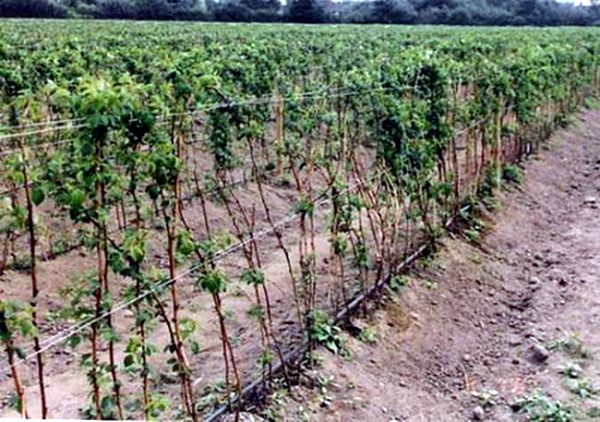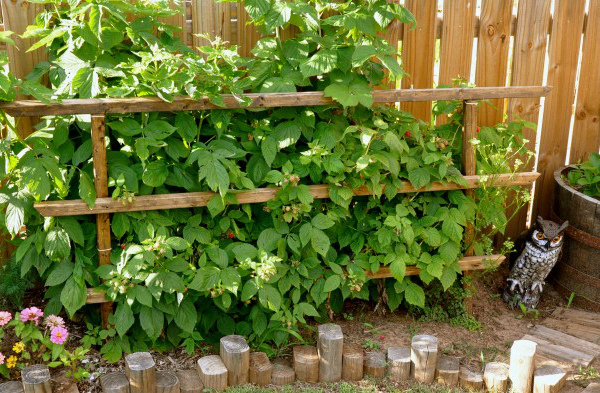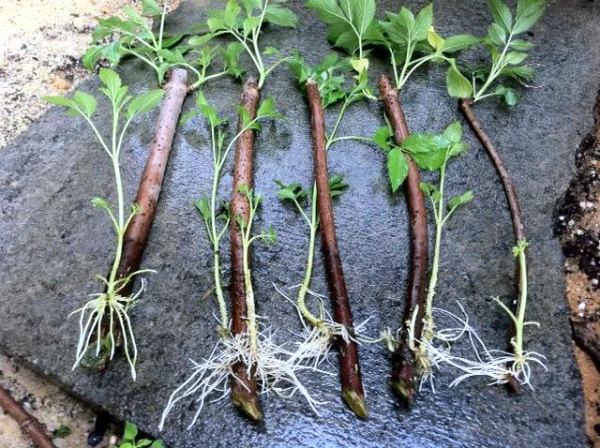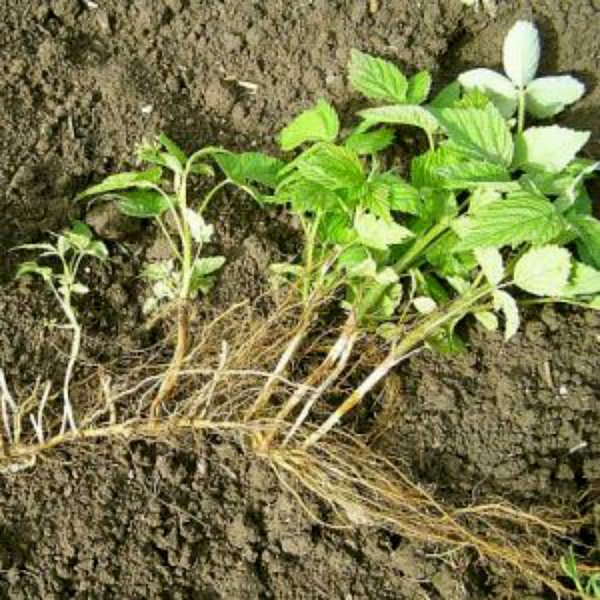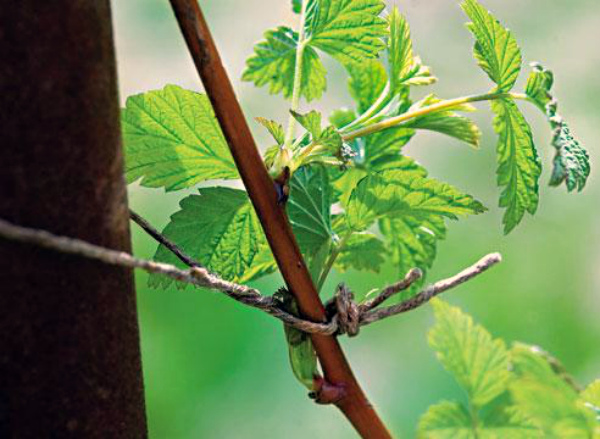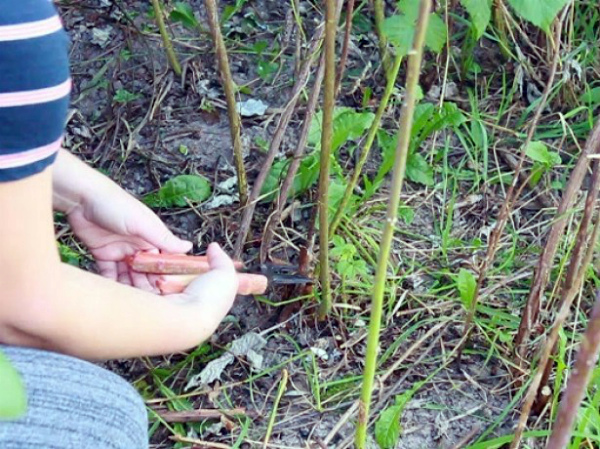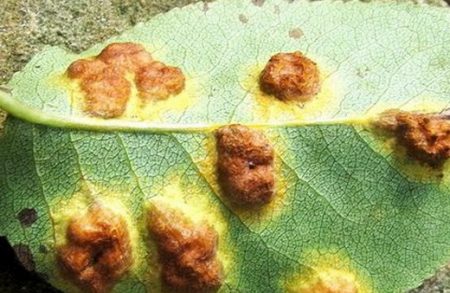We grow blackberries at their summer cottage
Content
Landing features
Novice gardeners who plan, but do not yet know how to grow blackberries in the country, should know that this is a culture of a two-year development cycle. This means that fruiting can only be expected from the second year after planting. It should also be borne in mind that the plant bears fruit from self-pollination, therefore, no more than one variety can be planted on one site - otherwise, it will not be possible to preserve the varietal characteristics of the berry.
Before growing a garden blackberry in the country, you should decide on a variety. There are two main forms - with erect shoots, and creeping. There is also an intermediate form that combines the features of the previous two - semi-creeping. Each of the forms has its own characteristics in agricultural technology. Erect blackberries are not difficult to grow and care for, as they are more resistant to frost, their stems are not high, but there is one significant drawback - they are prickly, and this makes picking berries difficult.
Creeping varieties are less resistant to frost, the shoots are flexible and very long (up to 10 m), they are more difficult to cut and require the installation of trellises. The semi-creeping form is mainly hybrids with a high level of productivity and quality of berries. Among these varieties, there are many thornless blackberries, large-fruited and high-yielding, which is very important for small farms where industrial blackberry cultivation is practiced.
The planting scheme depends on the variety and shape of blackberry shoots. For erect blackberries, the optimal distance between bushes is 1.5–2 m and 2–2.5 m between rows. Seedlings can be planted both in bush and in a belt way - when the plants are arranged in a row at a distance of 0.6-1 m. Such berry bush cultivation is convenient along the fences if the summer cottage has a small area.
The location of the creeping blackberry plantings depends on the variety. If the lashes are of medium length (5-7 m), then the distance between the bushes can be 2-2.5 m. With a lash length of 10 meters or more, the distance should be increased to 2.5-3.5 m. The distance between the rows should not be less than 2.5 m At the same time, keep in mind that the height of the support should not be more than the distance between the rows, since the plants will shade each other.
Garden blackberries, the cultivation and care of which have certain characteristics, prefers sunny and calm areas with a groundwater level of no more than 1.5 m. Of course, in partial shade, the culture can also grow, but you should not count on sweet and juicy berries. As for the soil, it should be well-drained, sandy loam or loamy, and slightly acidic.
The best time to plant is mid-spring when the soil is warm enough.Before planting, it is necessary to carry out preparatory work: remove the area from weeds, dig planting holes or a trench in the case of belt planting. The size of the seedling hole should be 40–45 cm in diameter and up to 0.5 m in depth. Fertilizers are introduced into the pit (humus 0.5 buckets, superphosphate 100 g, potassium salt 40-50 g), mixed with the ground, and a young blackberry bush is planted in this soil mixture. After planting, the plants are watered abundantly, and the soil is mulched.
Blackberry propagation is possible in several ways: by layering (apical and horizontal), offspring, cuttings and seeds. Reproduction by layering is the simplest way in which you just need to bend the shoot growing on the bush to the ground, fix it, and sprinkle it with earth. After a while, the branch will take root, and a new bush will form, which can be transplanted to a permanent place.
Offspring are young shoots that have sprouted from the root. They can be separated and transplanted to another location. Only a shoot grown up to 10 centimeters or more is suitable for planting. It is also possible to grow blackberries from seeds, but this process is very long and troublesome. In addition, blackberries from seeds begin to bear fruit only after 4–5 years, so the seed method is used very rarely in private gardening.
Blackberry care
In general, garden blackberries are not demanding to care for. Particular attention should be paid to the seedling in the first year of life - regular watering, loosening the soil and weeding are important for it. For adult bushes, watering is carried out only as needed and in extreme heat, since the main root of the culture is located deep enough and the dryness of the soil is not afraid of it. During the periods of berry ovary and fruiting, it is recommended to water the blackberry more often, since the quality and taste of the berries suffer from the lack of moisture.
It is customary to cover the soil around the bushes with mulch. This measure greatly simplifies the care of the blackberry, as it eliminates the need for weeding, loosening and frequent watering. As for fertilizers, you can do without them if the plants look healthy and bear fruit abundantly - this means that the soil in which they grow is fertile. If there is a slowdown in growth or a lack of berries, then in the spring you can add a little nitrogen fertilizer (20-25 g / 1 bush) or humus (0.5-1 bucket / 1 bush). Before the start of fruiting, the bushes are fed with potassium so that the berries are sweet and tasty.
Blackberries of any variety require pruning and pinching (shortening) of the shoots. The culture rarely gets sick, but in order to completely eliminate this risk, it is recommended to carry out preventive spraying of the bushes with light insecticides: copper sulfate, Bordeaux liquid.
The culture does not tolerate low temperatures, so for the winter it must be covered with a thick layer of mulch (peat, humus, sawdust, dry tops, needles), snow or more reliable shelter - it all depends on the climatic conditions of the region.
For example, growing blackberries in the Moscow region, planting and caring for which also depends on the climate, involves sheltering not only with mulch, but also with covering material, since the winter temperature in the central zone often drops below -20 ° C. While the cultivation of blackberries in Ukraine is a little easier, because the climate of this country is milder, and winters with temperatures of -20 ° C are not so frequent.
For creeping forms of blackberries, it is necessary to install supports (trellises). The easiest way to install a support is to drive in a long peg and tie shoots to it, which is often done by summer residents. However, for a large planting, the installation of real trellises with wire, up to 2 m high is required. The trellis is the most convenient design for creeping and semi-creeping varieties, since it greatly simplifies pruning, bush formation, harvesting, and, importantly, helps the bush to remain compact.
Blackberry pruning
Forming and pruning blackberries are the most important activities in crop care. The yield of blackberries, the taste and size of the berries depend on how correctly and in a timely manner the pruning is carried out.
Many novice gardeners ask themselves: is pruning really necessary, and can you do without it? If the shrub is grown only as a hedge, which is extremely rare in the country, then you can. But if you expect to get a good harvest from a bush, then pruning is a must for any variety.
As already noted, a two-year development cycle is characteristic of blackberries - in the first year the young shoot grows and gains strength, and only in the second year lateral branches form on it, peduncles appear, and then berries. After that, the shoot no longer bears fruit and does not represent any benefit to the bush, so it is removed. Removal of old shoots is carried out during autumn pruning in mid or late September.
During this pruning, absolutely all branches bearing fruit in the current year are removed at the root, as well as excess young growth. For good fruiting, it is recommended to leave 6-8 of the most powerful young shoots in the bush (which will bear fruit next year), and cut the rest off the base - you cannot leave the stumps, as rot will develop on them, and this will lead to infection of healthy branches. The remaining shoots should be shortened by a quarter (20–25 cm) to improve lateral branching - it is recommended to cut the cut immediately above the bud. Autumn pruning is preparatory for winter, after which the plants can be covered.
In the spring, the blackberries are freed from their shelter and examined. If the lashes are elastic, brown in color, slightly shiny, then we can assume that they have survived the winter safely. Shoots that have become black, brittle and rough are considered frozen - they are removed. Spring pruning can be more than just sanitary. In the spring, you can also slightly prune the tops of the preserved shoots - this procedure will make them awake and contribute to more abundant flowering.
Separately, a few kind words should be said about remontant blackberry varieties. Pruning it is a simple and pleasant process, since absolutely all shoots are subject to removal. These varieties are characterized by annual fruiting, so in the fall all shoots are cut out, and in the spring new ones appear in their place. The blackberry of the remontant variety grows very quickly - by the middle of summer, thinning pruning may be needed.
Video "How to prepare a blackberry for winter"
So that the culture does not freeze in winter at the summer cottage and quickly recovers by the new season, a number of activities need to be carried out. Details in the video.
Blackberry pests and diseases
In most cases, garden varieties of blackberries have a high immunity to diseases and pests. And if it so happened that the blackberry on the site got sick, then, most likely, it became infected from neighboring fruit and berry crops. Since the culture is the closest relative of raspberries, then their diseases are the same:
- rust (red or orange spots on the leaves) is a fungal disease, therefore timely prevention is important (digging the soil in autumn, burning dry leaves), if there are signs of the disease, the bushes are treated with Bordeaux liquid, garlic infusion;
- anthracnose (sores on leaves, shoots and berries, leading to deformation and drying) - you can treat it with your favorite insecticide, but the only way to fight the disease is to remove and burn the diseased plant;
- purple spot (spots on the green part of plants) - the main cause of the disease is high humidity, Bordeaux liquid is used for treatment, in advanced cases the plant is destroyed;
- powdery mildew (white bloom on the leaves) is a fungal disease, which is also caused by high humidity, the treatment is the same as for spotting.
Of the pests, the following insects can disturb the blackberry: aphids, ticks, raspberry moth, raspberry beetles, sawfly caterpillars and other raspberry pests. In the fight against them, folk remedies are effective: solutions of ash with laundry soap, infusions of garlic and tobacco, as well as Bordeaux liquid.
Video "How to care for blackberries"
This video will tell you what you need to do with a berry bush to get 30 kg of tasty and healthy berries from one bush.


